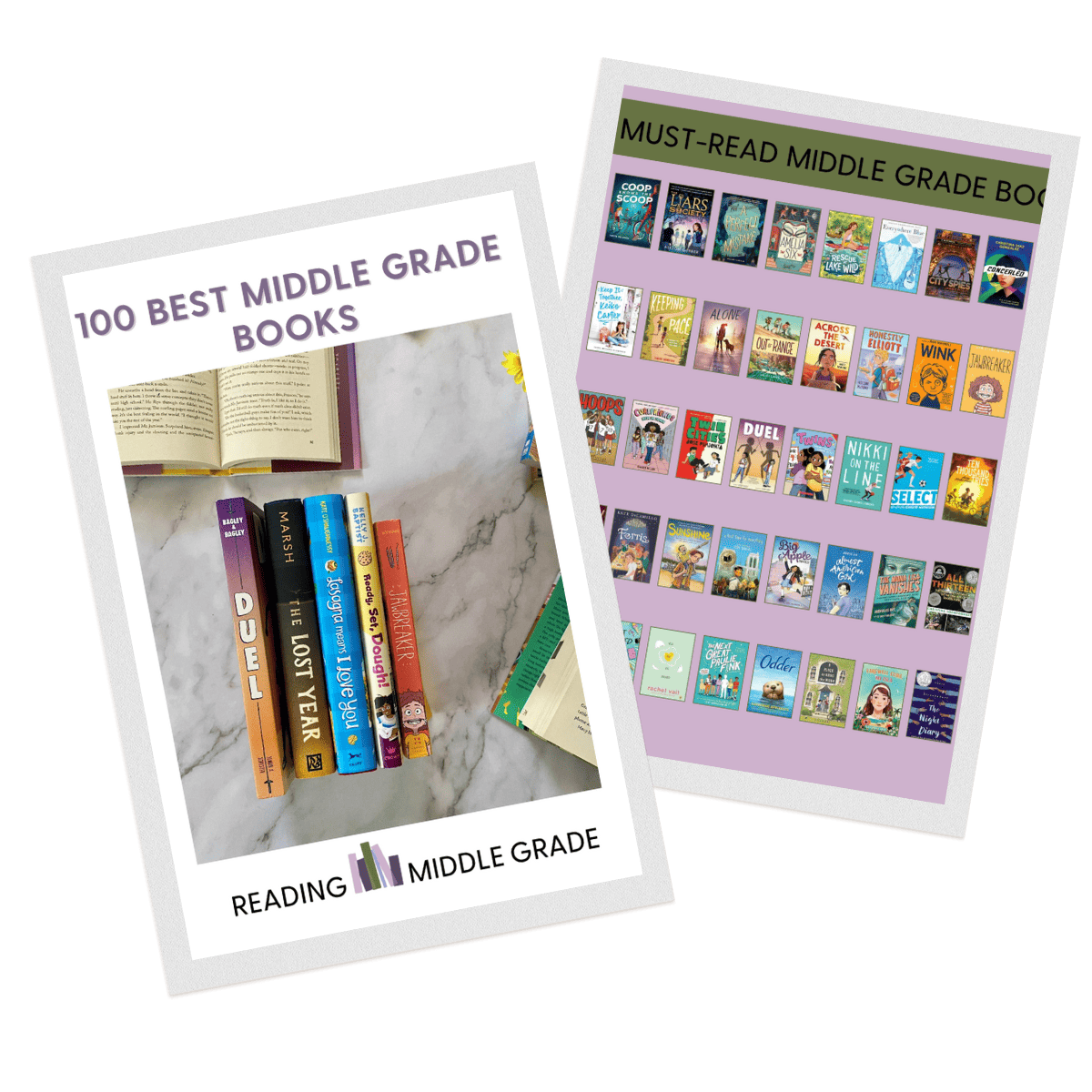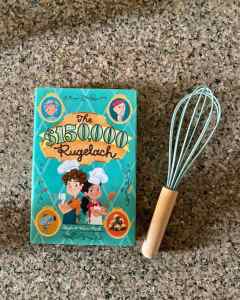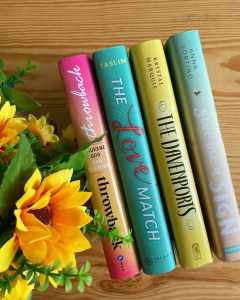Detour Ahead is a new middle grade book written in prose and verse. It features two kids — one Salvadorian, one Jewish-American who also happens to be neurodivergent. I was happy to receive an advance copy from PJ Publishing and I’ve recently started reading (and enjoying it). I enjoyed chatting with co-authors Pamela Ehrenberg and Tracy Lopez about their inspiration for the story, writing about family, culture, and what friendship means.

Interview with Pamela Ehrenberg and Tracy Lopez on Detour Ahead
Hi Pamela and Tracy! Welcome to Reading Middle Grade. I’m excited to talk about your new middle grade book, Detour Ahead. This story is told from two perspectives and co-written by you both. What inspired you to write this story, and why did you decide to write it together? Have you both always wanted to write middle grade literature?
Tracy: I’ll let Pamela tell about the inspiration for the story since it originated with her. As for how we decided to work together, in 2016 Pamela was looking for a co-author to write a Salvadoran character’s POV who was also comfortable writing poetry, middle grade children’s fiction, and who was familiar with the DC area. I offered to help her find someone since I married into the Salvadoran culture over 20 years ago, and I knew some writers in the community.
During this time, Pamela and I emailed back and forth and became friends. She had asked in her very first email that if we couldn’t find anyone would I be interested in giving it a try. We both wanted to make a good faith effort to find a Salvadoran writer, but in January 2017, we ran out of leads to follow, and we kept getting little signs from the universe that we should give it a go together.
And as for middle grade literature, it’s such a joy to write for this age group. I have so many vivid memories from that time in my life, and it’s pivotal in so many ways. Also, some of the books I read growing up at that age became building blocks for who I am, so it’s an honor and responsibility I don’t take lightly.
Pamela: So, Gilah’s and Guillermo’s meeting via Metrobus was inspired by a real-life incident where a bus that my son and I were riding swerved too close to a cyclist, causing her to fall off her bike. Our autistic teenage neighbor, who was sitting across the aisle from us on the bus, was the person who persisted in calling out to the bus driver to ensure we stopped and made sure the cyclist was OK. In terms of why Tracy and I decided to write the novel together: it seemed clear there were two stories contained within the one story, and that not only each narrator but also each author would have different pieces to contribute.
I’ve always wanted to write middle grade, though it took a writing professor to make me know that was what I had always wanted! As a college sophomore, I had just become brave enough to declare my English major with a creative writing concentration. I was aspiring toward (but falling short of) a perfect, New Yorker-worthy short story when my professor, Kristin Hunter, returned a story with the comment, “This sounds like the first chapter of a young people’s novel!” I remember that feeling of joy at realizing—wait, that’s a thing I can do?! My first MG was published in 2007, and I have always loved this chance to re-embrace my middle-school self, with a bit of kindness toward my earlier self, based on knowing a bit about what happens next.
Gilah is on the autism spectrum, and her internal monologues help readers understand how she thinks and what life is like for her as a neurodivergent person. Why did you choose to center a neurodivergent protagonist and why was it essential for you to write her in that way?
Pamela: I think a big part of what empowered Gilah to her initial heroic act on the bus was the fact that her internal compass of what’s the “right” thing to do is strong enough to overpower a lot of external “noise” that can be more of a distraction for some people with “neurotypical” wiring. (I actually am not a fan of “neurotypical” as a label, partly because of the challenges it creates in finding labels for people with other kinds of wiring.) The people other than Gilah who saw Guillermo fall off his bike had a lot of distractions and concerns about “wait, was this actually an emergency? What do others think? Am I being called upon to act?” – that prevented them from displaying Gilah’s level of heroism. I see the same pattern in Greta Thunberg’s sounding the alarm about our planet, and I see the need for more folks in leadership roles — e.g., in pandemic response—who aren’t afraid to identify and respond to an emergency.
So, I chose to center Gilah, and Gilah’s particular brain wiring is essential to her Gilah-ness. Gilah taught me that identities are complicated, and getting to know her better led to an unexpected path toward getting to know myself better as well. One possibility that emerged is that I might have a condition called Non-verbal Learning Disorder (NVLD) — which used to be part of the autism spectrum and now is considered a different form of neurodiversity/neurodivergence. I may never know for sure, but I will always be grateful to Gilah for this chance to get to know both of us a bit better!
I liked that Guillermo’s sections are written in verse. Did his story come to you in verse, or did you ever try writing in prose first?
Tracy: It was Pamela’s idea that her character’s POV would be in prose, and the other POV would be in verse, so when I agreed to write Guillermo’s part I knew when I sat down to write it what I would be doing. I’ve always loved writing poetry, so I was excited by the idea of writing a whole story this way — that was something I hadn’t done. Luckily once we worked out an outline and I knew where the story needed to go, the poems came. Like any other writing I do, some came easy and others took more effort.
It’s a romantic view I think many young poets have, or at least that I had a long time ago, that you write the poem when inspiration strikes and it’s done. But poetry, like any other writing, benefits from revision. Years ago I took a poetry workshop taught by Douglas Kearney and he talks about the questions you can ask yourself as you look at that first draft. You have to look for ways to improve the rhythm, experiment with moving lines, play up things that are already happening on the page, and so much more. I’m thankful I took that workshop. It really changed the way I write poetry, and I’m still learning.
Being Jewish is a big part of Gilah’s life. She talks about the Torah and her upcoming bat mitzvah. I’m not Jewish, but I find B’nai Mitzvah stories interesting. Why do you think a lot of Jewish middle grade books include the B’nai Mitzvah in the narrative arc?
Pamela: I find this so interesting too, especially when I think back to how few b’nai mitzvah stories there were at the time of my bat mitzvah in 1985.
I think the MG genre is, I think by definition, about characters’ “coming of age,” coming into themselves, finding their place in the world. B’nai mitzvahs are about that too — I think even more so than in 1985, with the current ceremonies doing much more to personalize the experience and really highlight what’s unique about each kid.
Plus, from a narrative perspective — I think I read somewhere that the most common age for MG protagonists is 12 — so it’s kind of perfect from a narrative viewpoint to have the main character’s journey happening parallel to this journey that’s been structured by their culture.
Friendship for Guillermo and Gilah is finding comfort in another’s presence–whether or not there’s conversation. What does good friendship look like for you both?
Tracy: For me, you said it exactly. That thing that Guillermo and Gilah have where the silences between them aren’t awkward — that’s friendship to me. When you can just be, and that’s enough.
Pamela: I agree! Good friends are the ones who let me be myself — and are the ones who manage to reduce drama without inflicting new drama. One unexpected benefit of co-writing this book about friendship was the opportunity to find a new friend in Tracy!
Gilah has several coping strategies for navigating a largely neurotypical world. I liked reading about her practice sessions with her mom and therapy. I’m curious whether you have personal experience with any of those strategies and why you wanted to include them in the story.
Pamela: The specific strategies from therapy and the home gym set-up were inspired by a good friend and her autistic teenage son, who was one of my earliest beta readers. The strategies aren’t a big focus of the story, but I wanted to include them, as well as the practice sessions with Gilah’s brother, as part of the background of “typical” day-to-day life that some kids go through to adapt to a world that was largely built for others.
I think my teen reader’s recognition of some of those aspects of the background of his life in the pages of the manuscript is similar to readers’ recognizing B’nai mitzvah lessons, panaderías, other “background” settings that don’t necessarily define them as a person but give a chance for mirrors/windows into the various worlds that different readers inhabit.
I loved the focus on family for both kids. We get to know their families just as well as we know them. Do you both feel like family is at the center of your lives too?
Tracy: Even though I like to spend a lot of time alone, I feel very grateful to have the family I have – my husband, my sons, and my extended family outside the household. During the pandemic, I found a new appreciation for them, for sure. I missed the traditions we shared, and sitting around with my mother and sisters over coffee and laughing at things that would be funny to no one but us.
Pamela: Totally. My then-7-year-old son was with me when the original incident occurred on the bus in 2015. Since then, we’ve made it through his sister’s bat mitzvah, his bar mitzvah, the loss of two uncles, my aunt, and my mom; the relocation of my dad to live closer to us in DC — we definitely could not have navigated this (not to mention the pandemic!) without the support of the extended family, including in-laws; 2nd-, 3rd-, and who-knows-quite-how-we’re related cousins.
Being Latin-American comes with a ton of outside assumptions. For Guillermo, people assume that he’s Mexican or are surprised that his sister isn’t bilingual. I recently loved reading Emma Otheguy’s Sofia Acosta Makes a Scene about a young Latina whose eyes are opened to prejudice against families like hers. What do you hope to accomplish by sharing Guillermo’s story?
Tracy: I haven’t read that one yet, but yes! There are so many amazing books with this theme and I think it’s really important to address it because prejudice and ignorance are unfortunately something kids encounter even at a young age.
By including the assumptions people make about Guillermo and his little sister, I hope to portray the reality that Salvadoran-American kids face. My boys would come home from school and tell me pretty frequently that people assumed they were Mexican. A lot of the time it didn’t even come from someone intentionally trying to cause harm. You might have a teacher read a story to the class about a Mexican tradition, and then ask one of my sons to stand up and share more about it. Even sometimes Mexican-American peers would try to correct their Spanish not knowing that a word they used was Salvadoran Spanish. That gets frustrating.
Kids already have enough going on with sorting out their identity and who they are in the world. They don’t need that on top of things. I just wanted my kids and other Salvadoran-American kids to be able to see themselves in the pages of a book. I hope that they will get to see themselves more and more in all their diverse lived experience through the future books of Salvadoran American authors in the next generation.
Which great middle grade books have you read and enjoyed recently?
Tracy: Oh, I love this question! Let’s see: Omar Rising by Aisha Saeed, The Lost Language by Claudia Mills, The Henna Wars by Adiba Jaigirdar, Get a grip, Vivy Cohen! by Sarah Kapit, When the Stars are Scattered by Victoria Jamieson & Omar Mohamed, and Sorry for your Loss by Joanne Levy.
And can I name some on my TBR that I’m excited about? Those would be: Moonwalking by Lyn Miller-Lachmann & Zetta Elliott, The Prince of Steel Pier by Stacy Nockowitz, The Backyard Secrets of Danny Wexler by Karen Pokras, Chunky by Yehudi Mercado, Shabbat Sabotage by Emma Carlson Berne, It’s My Party and I Don’t Want To Go by Amanda Panitch, and When Lightnin’ Struck by Betsy R. Rosenthal… Okay, I’ll stop there even though I could keep going!
Pamela: I am finally reading my copy of Katherine Marsh’s amazing Nowhere Boy—I’d been saving it ‘til I had a completed draft of my pandemic-era work-in-progress, which also features a refugee family. Nowhere Boy has reminders on every page that the world is simultaneously so big and so small. And I’m excited that another great middle grade book that I read in draft form will soon be out in the world: My Name Is Hamburger, by Jacqueline Jules. For me, this book is a reminder that the time between generations is also so small, and that historic experiences with anti-Semitism, as with other “isms,” profoundly affect our world and experiences today.
I have a number of the same new titles as Tracy on my TBR list, including some that we’ve connected with through PJ Our Way, which is the MG branch of the PJ Library program. I have such admiration for this model of bringing important books to the hands of readers and would love to see other foundations/nonprofits consider this path for bringing about more books related to other underrepresented cultures.
What is one thing you hope readers will take away from reading Detour Ahead?
Tracy: I hope readers first of all just enjoy the journey and the detours along with Gilah and Guillermo. It would also make me happy if they came away knowing the importance of not only loving others for who they are, but loving yourself.
Pamela: As you know, we mostly wrote this book before the pandemic, navigated the final steps to publication during the pandemic, and now it’s finding its way into a world that is sort-of-maybe starting to come out of the pandemic, and imagine what a post-pandemic world could look like. I think we’re all in agreement that any post-pandemic world needs a lot more kindness, of all kinds than the world we used to live in. So I hope readers come away with a belief that every person both needs and has the capacity to show kindness — and that some of the closest friendships can come from looking around to see who else might be looking for a friend.
Buy Detour Ahead
Meet Tracy Lopez and Pamela Ehrenberg

Tracy López is a novelist and poet born and raised in Maryland just outside Washington, DC. When she isn’t writing, she loves to read, create art, and bake pan dulce. She now lives in the beautiful mountain state of West Virginia with her husband, sons, and a silly hound dog. Detour Ahead, co-authored with Pamela Ehrenberg, is her first children’s book. You can find her online at tracylopezbooks.com.

My life as a writer began at age two and a half. I remember my dad picking me up from nursery school and explaining, as we walked hand in hand across the parking lot, that I really should consider playing with the toys there, not just watching the other children.
For four decades (including my time at the University of Pennsylvania and as an AmeriCorps service member), watching and listening played a big role in my development as a writer: I learned how to notice stories and channel them into the world. But in any good story, the characters must change, and the same is true for writers. Now I believe we must be more active in determining whose stories are heard—as well as how those stories are told and who has access to hear them.
With great hope for the future ahead–watching and listening will always be important to who I am as a writer, but you’ll no longer find me passively by the sidelines. I encourage you to join me in shaping our shared future together.
Check Pamela Ehrenberg out on her Website, Twitter, Facebook and Goodreads.









What do you think? Leave a comment